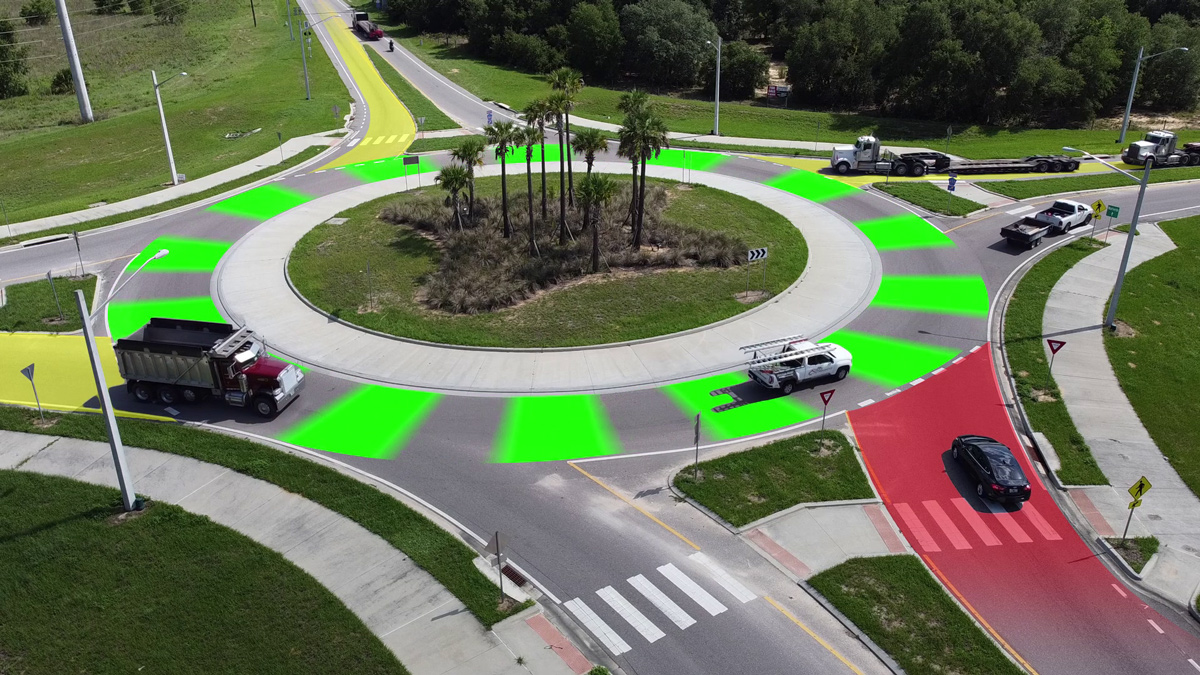For National Roundabouts Week, which began September 21, the Florida Department of Transportation (FDOT) produced three new educational videos to help answer some commonly asked questions about the circular intersections.
“We developed these videos because we want residents to be as excited about roundabouts as we are,” said Jessica Ottaviano, FDOT District Five Public Information Director. “Roundabouts provide a multitude of benefits, including significantly reducing the chance of severe crashes, reducing travel times, and accommodating up to 50% more traffic than typical intersections.”
The three new educational videos provide information about these frequently asked questions about roundabouts:
- Who has the right of way in roundabout?
- How do large trucks navigate a roundabout?
- What makes a roundabout efficient?
Currently, there are about 20 roundabouts on Florida’s state road system and more than 300 on local roads statewide.
What is a roundabout? Roundabouts are circular intersections that move counterclockwise around a center island and have no traffic signal. Instead, traffic is determined by entry yield control. Vehicles that flow around the intersection have the right of way, while entering traffic yields to pedestrians and traffic already in the intersection.
Since roundabouts only move in one direction, they virtually eliminate head-on and high-speed, right-angle collisions. While conventional intersections have 32 conflict points, roundabouts cut that number by 75% to just 8. The Federal Highway Administration states that roundabouts reduce the number of fatalities by up to 90% and result in an overall 76% reduction in injury crashes.
Learn more about roundabouts at I4Beyond.com/roundabouts.



 December Marks National Impaired Driving Prevention Month
December Marks National Impaired Driving Prevention Month Cold Weather Brings Unique Construction Challenges
Cold Weather Brings Unique Construction Challenges What’s Next for the New Loop Ramp on Apopka-Vineland Road
What’s Next for the New Loop Ramp on Apopka-Vineland Road ‘Tis Always the Season to Buckle Up!
‘Tis Always the Season to Buckle Up!